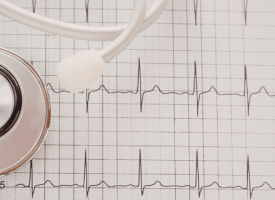Methamphetamine - 2015
- There is clear medical evidence that methamphetamine, and particularly crystal methamphetamine (‘ice’) is a very harmful drug at the individual, community and societal levels.
- Methamphetamine is not a ‘recreational’, ‘soft’ or ‘party’ drug and should never be referred to as such. Every effort must be made to avoid normalising methamphetamine use or minimising its harmful effects.
- Acute methamphetamine psychosis is one of the most damaging health consequences of methamphetamine use. Acutely, it presents a major safety issue for health care staff and the intoxicated patient and his or her family.
- There is significant evidence that in Australia there is increased use of methamphetamines and particularly crystal methamphetamine from 2008 onwards. The perception from medical practitioners is that this has driven a damaging increase in severe, acute and chronic severe mental and medical illness in users.
- Health impacts are often severe with physical illnesses, particularly major cardiovascular diseases, major infections and significant injuries commonly seen. Patients are often neglectful of their problems and difficult to engage or maintain in treatment.
- Drug induced or exacerbated chronic psychotic illnesses are one of the most disabling features of methamphetamine use. The increasing prevalence related to increased crystal methamphetamine use places a severe strain on already overburdened and inadequately resourced acute and community psychiatry services.
- Publicly funded programs are required to educate young people on the major problems with illicit drug use, including methamphetamines, and to promote resilience and increased confidence to reject peer pressure.
- Education and training about amphetamine use and effects must be incorporated into the medical curricula, and should also be available to all practitioners as part of continuing professional development programs.
- General practitioners are well placed to identify many early methamphetamine users. General practitioners should be supported and encouraged to screen for illicit drug use.
- Treatment services should reflect the full range of methamphetamine users. This means services providing intensive inpatient support with collaboration between addiction medicine, psychiatric and other specialist oversight, through to less intensive support provided in the community via cognitive, behavioural and motivational interventions.
- Emergency department staffing should include a specialist drug liaison officer, seven days a week with extended hours, to engage, support and intervene in patients with acute methamphetamine related illness.
- All hospitals should have appropriate, rapidly responsive security arrangements and appropriate infrastructure.
- Many methamphetamine patients arrive at emergency departments restrained by police. Quiet areas within an emergency department might help settle methamphetamine patients, however, due to the likelihood of physical complications, intoxicated patients often need to be managed in monitored, critical care bays. Adaptive negotiated clinical processes, security and tailored approaches are required for each patient.
- Research on causation, prevention strategies and the best methods of treatment and rehabilitation for methamphetamine dependency should be a priority for funding.
- Law and order responses to the supply and demand of methamphetamine should be properly balanced with the need to reduce demand for the drug and provide appropriate health care including referral to treatment services and support for users.
- Health financing must include specific and increased funding for treatment, rehabilitation and support services for drug-addicted patients. Any increase in funding must improve referral systems for methamphetamine affected patients.
- A comprehensive and sustained public health education program on the health and social consequences of methamphetamine use is needed to discourage experimentation, normalisation of use and induction of new users.
BACKGROUND
Methamphetamine
Methamphetamine is a synthetic stimulant drug that comes in a number of forms. The powder form, traditionally known as ‘speed’, is usually of relatively low purity and can be snorted, injected or taken orally. Methamphetamine base is a damp oily substance, is of higher purity and is typically injected. Crystalline methamphetamine, commonly referred to as ‘ice’, is methamphetamine in its purest form and is usually smoked or injected. In Australia, crystal methamphetamine is currently the favoured form of methamphetamine, followed by the powder form.[1]
Methamphetamine use often produces an initial sense of wellbeing and euphoria, increased feelings of alertness and decreased appetite. It can also heighten confidence but increasing doses often leads to agitation and paranoid beliefs.
Methamphetamine is a more potent form of the drug amphetamine. Dexamphetamine is a type of amphetamine that is prescribed for some illnesses, including Attention Deficient Hyperactivity Disorder and other learning related conditions, where it may improve a patient’s ability to focus. However, in individuals without a prescription, there is potential for this medicine to be misused and there is an illegal market for it.
Use
While a recent change in preference to crystal methamphetamine has been observed, self-reported use of methamphetamine is relatively stable, with 2.1% of the population saying that they have used in the last 12 months. Users are however reporting more regular and frequent consumption.[2] The incidence of methamphetamine harms, particularly psychosis, increases sharply as a consequence of the quantity consumed.[3]
The national data on methamphetamine use is likely to under represent use because many heavy users are living chaotic lives, are suspicious of authorities and may be unable or unwilling to participate in surveys.
There was a 204% increase in methamphetamine abuse within the Aboriginal and Torres Strait Islander population in the 1994 to 2004 decade.[4] Aboriginal and Torres Strait Islander people suffering from substance related psychosis are admitted to hospital inpatient units at 3.7 times the rate expected of the overall population.[5]
In summary, more people are using more potent forms of methamphetamine more often, increasing the likelihood of associated health problems.
The experience of emergency department physicians is that users represent all walks of life and that smoking or injecting crystal methamphetamine appears to be associated with a significant likelihood of extreme and harmful usage and addiction.
Health
Mental illness
Methamphetamine users are at significantly increased risk of mental illness. Rates of mental illness in stimulant users have increased significantly and are likely associated with the increasing use of crystal methamphetamine. [6] Mental health problems from methamphetamine can occur from first usage but are more common in recurrent users. Over three quarters of dependent methamphetamine users experience significant mental health issues.[7]
The most common features are agitation or aggression, depression and anxiety, impaired concentration, emotional lability and psychosis. Users present with psychotic episodes featuring agitation and paranoid delusions. Others often have severe fixed delusions about insect and parasite infestations leading to significant skin lesions and infections.
Users of crystal methamphetamine are five times more likely to experience psychotic symptoms when using compared with periods of abstinence.[8] Approximately 30% of dependent users experience psychotic episodes each year. Psychotic episodes are probably more likely in those with pre-existing vulnerabilities,[9] but also occur in people who are psychologically robust. Repeated methamphetamine use can change the brain’s chemical systems resulting in permanent brain damage. [10]
Physical illness
Physical illnesses are commonly seen in methamphetamine users. Physical illnesses are driven by direct consequences of the drug’s actions, harms from drug routes (particularly intravenous use), effects from an addicted lifestyle and the consequences of social isolation, poor decision making or executive functioning, and loss of income and work.
Illness from crystal methamphetamine can affect any body system, but direct effects are mainly cardiovascular and neurological. Cardiac issues are particularly seen as tachy-arrhythmias, coronary ischaemia due to vessel spasm or dissection, hypertensive crises and cardiomyopathies or heart failure. Acute effects on the central nervous system include the expected agitation, hyper-arousal and anxiety, but also intracranial haemorrhages and seizures. Later issues in heavy users include accelerated atherosclerosis and increased risk of strokes, poor executive functioning, early onset dementia and structural abnormalities in the brain.
Liver and kidney problems have also been associated with both acute ingestion and longer term use. Regular users, particularly intravenous users, are prone to many infections due to poor skin hygiene (skin abscesses, infective endocarditis, osteomyelitis, and cerebral abscesses), blood borne viruses due to needle sharing, as well as sexually transmitted diseases from high risk behaviours and promiscuity. Severe skin infections also occur due to delusion induced skin picking and injection of particulate substances (such as crushed tablets and cotton wool fibres). Dental problems occur due to accelerated tooth decay and bruxism (tooth grinding) induced by amphetamines, poor surveillance and dental hygiene and reduced salivation. These acute and chronic medical conditions, related or not to drug use, can be difficult to manage due to poor compliance with medical advice, follow up or treatments.
Societal impact
There are likely to be a number of drivers for increased crystal methamphetamine consumption, including increased availability, competition, decreased price and normalisation in some groups. As methamphetamine is excreted quickly it may also appear to be an incentive for use, particularly for those who may encounter drug screening as part of their employment.
Due to the agitated behaviours, psychosis, poor decision making and high risk lifestyles associated with methamphetamine consumption, users can experience a range of social and legal problems. For example, amphetamine users are strongly over represented as perpetrators and victims of trauma, particularly interpersonal and road trauma.
Some methamphetamine users may represent particular management challenges due to social marginalisation or geographically remote habitation. However the widespread use, particularly in some well paid employee groups, and normalisation of methamphetamine use means that presentations for medical treatment reflect all backgrounds.[11]
Due to its potential role as a precursor, all pseudoephedrine based medication should continue to be scheduled to a minimum S3 (available from the pharmacist only), with strict control on quantities supplied, in accordance with therapeutic standards and professional guidelines.
Law and order responses to the supply and demand of methamphetamine should be properly balanced with the need to reduce demand for the drug and provide appropriate health care including referral to treatment services and support for users.
Impact on healthcare system
Data from the Victorian ambulance service confirms a recent dramatic increase in call outs relating to methamphetamine use, with a high proportion resulting in hospital admissions.[12] Hospital separations for methamphetamine related problems are the second highest among the four major illicit drug types (2,895 separations in 2011/12).[13] While the number of patients presenting to emergency departments for methamphetamine related problems is modest in terms of overall numbers (1-3% of attendances), the resulting impact is very significant with users having high acuity psychiatric and or medical issues requiring very high resource usage.[14]
Methamphetamine induced psychosis is of particular concern to the medical profession, given the impact it has on emergency departments and psychiatric services across Australia. Symptoms of acute drug induced psychosis are often very severe and or prolonged requiring restraint, sedation and prolonged observation or admission.[15] These problems are multiplied significantly when methamphetamine is combined with other substances including alcohol, which is a common occurrence.
Medical illnesses in these patients are often severe: users present late in the course of the illness and generally require prolonged treatments. Due to the underlying dysfunction in these patients’ lives and their poor coping skills, relapse and non-compliance are common, increasing health care costs and resource use.
Treating staff are at high risk of injury from these patients who can require major use of security personnel and both physical and chemical restraints. An Australian study comparing the characteristics of individuals presenting to hospital emergency departments confirms that methamphetamine users are more aggressive, violent and dangerous than other patients.[16] The impact is felt in all emergency departments and psychiatric units, but aggressive amphetamine intoxicated patients pose a significant problem for regional hospitals with fewer clinical staff and poor access to security personnel.
In addition to the impacts on the health system, it is increasingly recognised that crimes and acts of violence are strongly associated with methamphetamine use and lifestyles. According to the Australian Crime Commission, crystal methamphetamine poses the highest current risk of harm to the Australian community.[17] There were 26,269 national consumer arrests for amphetamine type substances in 2013-14, an increase of over 18% on the previous year.[18] The number of police detainees testing positive for methamphetamine has also been steadily increasing in recent years (from 13% in 2009 to 26% in 2013).[19] Many dependent methamphetamine users will therefore spend periods of time in prison.
Treatment
Treatment episodes for injecting, smoking or inhaling of methamphetamine have increased significantly.[20] Long and intensive treatment is required to treat the addiction and associated mental and physical illnesses. This is not particularly suited to current treatment facilities available in emergency departments, general practices or even acute hospital admissions.
It has been estimated that there is currently a five year lag between problem use and treatment. [21] This occurs because methamphetamine related presentations with sleeping difficulties, anxiety, loss of appetite, mood disturbance, and relationship problems are often hidden from general practitioners and other clinicians. When methamphetamine users do present it can be quite late in the course of their illness which increases the likelihood of complications and difficulties in ensuring follow up or compliance.
Appropriate treatment and support services are grossly inadequate for methamphetamine users. Acute withdrawals may take significant resources and support with benzodiazepines. However there are currently no therapeutic agents that support methamphetamine abstinence, which is characterised by prolonged periods of symptoms and high rates of relapse. [22]
There should be a sustained investment in the training and support for all practitioners, but particularly general practitioners, to better identify and engage with methamphetamine users, provide brief interventions and increase referrals to community treatment or rehabilitation services. It is essential that adequate numbers of quality treatment and support services are available for practitioners who identify users to refer on to. Issues relating to methamphetamine use must be incorporated into the curriculum for medical students.
Due to severe complications and poor compliance with medical advice, methamphetamine users are often frequent attenders to emergency departments. It is essential that emergency departments are appropriately supported by acute drug and alcohol services who can provide brief interventions when patients are most receptive and guide them to appropriate treatment services. This means extended hours, seven days a week.[23]
Community based addiction, rehabilitation and mental health services are limited. Liaison with drug and alcohol services is often fragmented and methamphetamine users may not be considered a priority.
Treatment and rehabilitation services must reflect the spectrum of users via a ‘step-up step-down’ model. For severely dependent users with complex needs, treatment may initially be provided in an inpatient setting with intensive levels of support particularly through the initial withdrawal period. Given the likelihood of coexisting mental health problems, collaboration between drug and mental health specialists and services is important. These users may also require extended periods of assertive outreach and support. There is also a need to provided lower intensity treatment options for those who are less dependent or occasional users. Treatment may include sessions provided within the community that involve motivational, cognitive and behavioural interventions. A ‘step-up step-down’ model recognises that such sessions may not be sufficient for some users, so provision of support may need to be escalated.
The health financing system must include very specific funding for treatment, rehabilitation and support, if we are going to properly address the health and social consequences of methamphetamine use in Australia.
[1] Australian Crime Commission. (2015). The Australian Methylamphetamine Market – The National Picture. Commonwealth of Australia. Available from: https://www.crimecommission.gov.au/publications/intelligence-products/unclassified-strategic-assessments/australian-methylamphetamine
[2] Australian Institute of Health and Welfare. (2014). National Drug Strategy Household Survey detailed report 2013. Drug statistics series no. 28. Cat. no. PHE 183. Canberra. AIHW. Available from: http://www.aihw.gov.au/alcohol-and-other-drugs/ndshs/
[3] McKetin, R., Lubman, D., Baker, A., Dawe, S. & Ali, R. (2013). Dose-related psychotic symptoms in chronic methamphetamine users evidence from a prospective longitudinal study. JAMA Psychiatry, 70: 319-323.
[4] Wilkes E, Gray D, Casey W, Stearne A, Dadd L (2014) Harmful substance Abuse and Mental Health in Dudgeon P, Milroy H and Walker R (eds) Working Together: Aboriginal and Torres Strait Islander Mental Health and Wellbeing Principles and Practice Revised Edition. Telethon Institute for Child Health Research and Kulunga Research Network Australian Government Canberra
[5] Australian Institute of Health and Welfare (2014) Social and Emotional Wellbeing in Indigenous Australians. Accessible from: http://www.healthinfonet.ecu.edu.au/other-health-conditions/mental-health
[6] Australian Institute of Health and Welfare. (2014). National Drug Strategy Household Survey detailed report 2013. Drug statistics series no. 28. Cat. no. PHE 183. Canberra. AIHW. Available from: http://www.aihw.gov.au/alcohol-and-other-drugs/ndshs/
[7] National Drug and Alcohol Research Centre. (2006). Methamphetamine use and health. National Drug Law Enforcement Research Fund. Commonwealth of Australia. Available from: https://ndarc.med.unsw.edu.au/resource/methamphetamine-use-and-health
[8] McKetin, R., Lubman, D., Baker, A., Dawe, S. & Ali, R. (2013). Dose-related psychotic symptoms in chronic methamphetamine users evidence from a prospective longitudinal study. JAMA Psychiatry, 70: 319-323.
[9] Lea T., Bryant J, Ellard J., Howard J, Treloar C. (2015). Young people at risk of transitioning to injecting drug use in Sydney, Australia: Social disadvantage and other correlates of higher levels of exposure to injecting. Health and Social Care in the Community, 23(2): 200-207.
[10] Cruikshank CC. & Dyer KR. (2009). A review of the clinical pharmacology of methamphetamine. Addiction, 104, 1085-1099
[11] Westmore, T., Van Vught, J., Thomson, N., Griffith, P. & Ryan, J. (2014). Impacts of Methamphetamine in Victoria: A community assessment. Penington Institute Report. For the Victorian Department of Health. Melbourne Australia. Available from: http://www.penington.org.au/community-assessment-impacts-methamphetamine-use/
[12] Westmore, T., Van Vught, J., Thomson, N., Griffith, P. & Ryan, J. (2014). Impacts of Methamphetamine in Victoria: A community assessment. Penington Institute Report. For the Victorian Department of Health. Melbourne Australia. Available from: http://www.penington.org.au/community-assessment-impacts-methamphetamine-use/
[13] Roxburgh, A. & Burns, L. (2013). Drug-related hospital stays in Australia, 1993-2012. Sydney: National Drug and Alcohol Research Centre. Available from: https://ndarc.med.unsw.edu.au/resource/drug-related-hospital-stays-australia-1993%E2%80%932012
[14] Gray, S.D., Fatovich, D.M., McCoubrie D.L., Daly, F.F. (2007). Amphetamine-related presentations to an inner-city tertiary emergency department: a prospective evaluation. MJA, 186(7): 336-339.
[15] Gray, S.D., Fatovich, D.M., McCoubrie D.L., Daly, F.F. (2007). Amphetamine-related presentations to an inner-city tertiary emergency department: a prospective evaluation. MJA, 186(7): 336-339.
[16] Bunting, P.J., Fulde, G.W.O. & Forster, S.L. (2007). Comparison of crystalline methamphetamine (ice) users and other patients with toxicology-related problems presenting to a hospital emergency department. MJA, 187: 564-566.
[17] Australian Crime Commission. (2015). The Australian Methylamphetamine Market – The National Picture. Commonwealth of Australia. Available from: https://www.crimecommission.gov.au/publications/intelligence-products/unclassified-strategic-assessments/australian-methylamphetamine
[18] Australian Crime Commission. (2015). 2013-14 Illicit drug data report. Commonwealth of Australia. Available from: https://www.crimecommission.gov.au/publications/intelligence-products/illicit-drug-data-report
[19] Australian Institute of Criminology. (2014). Australian Crime Facts and Figures: 2013. Commonwealth of Australia. Available from: http://www.aic.gov.au/publications/current%20series/facts/1-20/2013.html
[20] Australian Institute of Health and Welfare. (2015). Alcohol and other drug treatment services 2013-14. Drug treatment series no. 25. Cat. no. HSE 158. Canberra: AIHW.
[21] Ezard, N. (2015). Presentation Central Issues in Psychostimulant use. St Vincent’s hospital, Sydney.
[22] Cruikshank CC. & Dyer KR. (2009). A review of the clinical pharmacology of methamphetamine. Addiction, 104, 1085-1099.
[23] Cruikshank CC. & Dyer KR. (2009). A review of the clinical pharmacology of methamphetamine. Addiction, 104, 1085-1099.



